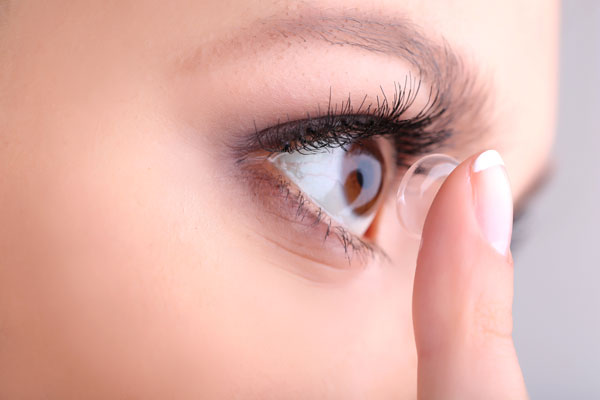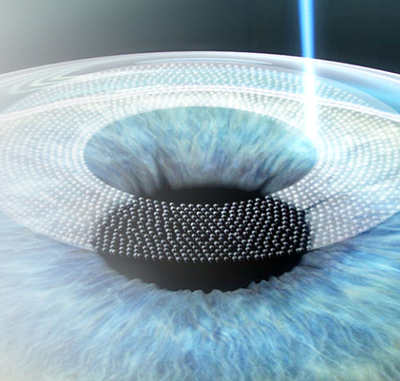Nearly half of the population suffers from some type of vision error

Nearly half of the population suffers from some type of vision error
Vision errors are caused by an imperfectly-shaped cornea, which prevents light from focusing on the retina, causing blurred distance vision. Nearsightedness (i.e., “myopia”) and astigmatism are the two main types of vision errors. The nearsighted eye is longer in the cross-section than a normal eye, focusing light in front of rather than on the retina, causing blurred vision. In the astigmatic eye the cornea is not symmetrical, causing light to scatter inside of the eye, also causing blurred distance vision.

The negative effects of contact lenses and glasses
While many people use glasses and contact lenses to correct their nearsightedness and astigmatism, these products are consumables and represent significant long-term expense to the patient. They may also cause persistent negative effects on the patient’s ocular health and overall quality of life. That’s why more and more patients are turning to laser vision correction for help.

The negative effects of contact lenses and glasses
While many people use glasses and contact lenses to correct their nearsightedness and astigmatism, these products are consumables and represent significant long-term expense to the patient. They may also cause persistent negative effects on the patient’s ocular health and overall quality of life. That’s why more and more patients are turning to laser vision correction for help.
We offer a spectrum of treatment solutions to correct your nearsightedness and astigmatism

We offer a spectrum of treatment solutions to correct your nearsightedness and astigmatism
As a full service laser vision correction practice, we offer a comprehensive set of advanced treatment solutions, including Wavefront-Optimized “All Laser” LASIK, SMILE vision correction, Customized PRK, and Contoura topography-guided LASK. Not all practices offer such a broad array of vision solutions, but since the vision needs of our patients are not all alike, we think Dr. Hyver should have the freedom to choose the treatment solution that’s optimal for you.

For patients over the age of 40
If you’re over the age of 40, you’ve probably noticed that when you’re wearing your contact lenses or glasses for distance correction, your reading vision suffers, and that when you remove your correction, your near vision improves. This distance and near vision trade-off means you may need to wear bifocals to see near and far, or to use reading glasses over your contact lenses or, as in the photo, to remove your distance glasses when you want to read. Or possibly better yet, consider a laser vision correction approach called MonoVision, which could help reduce your dependency on glasses and contact lenses for both your distance and near vision needs.
For patients over the age of 40

If you’re over the age of 40, you’ve probably noticed that when you’re wearing your contact lenses or glasses for distance correction, your reading vision suffers, and that when you remove your correction, your near vision improves. This distance and near vision trade-off means you may need to wear bifocals to see near and far, or to use reading glasses over your contact lenses or, as in the photo, to remove your distance glasses when you want to read. Or possibly better yet, consider a laser vision correction approach called MonoVision, which could help reduce your dependency on glasses and contact lenses for both your distance and near vision needs.
Schedule your free consultation
with Dr. Scott Hyver at any
one of our three Bay Area offices.
To schedule your free consultation with Dr. Hyver, or if you have any questions, please complete the following:

